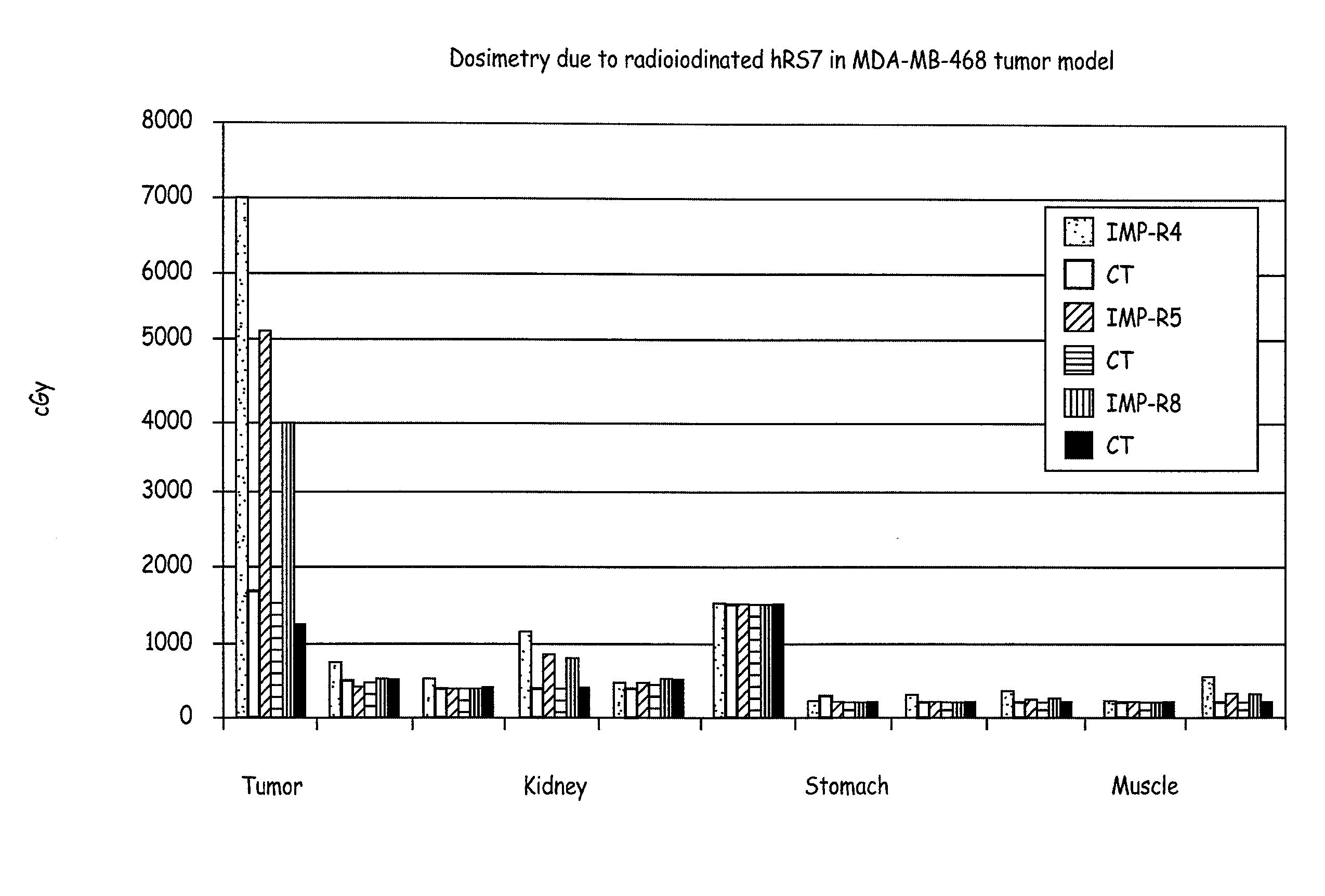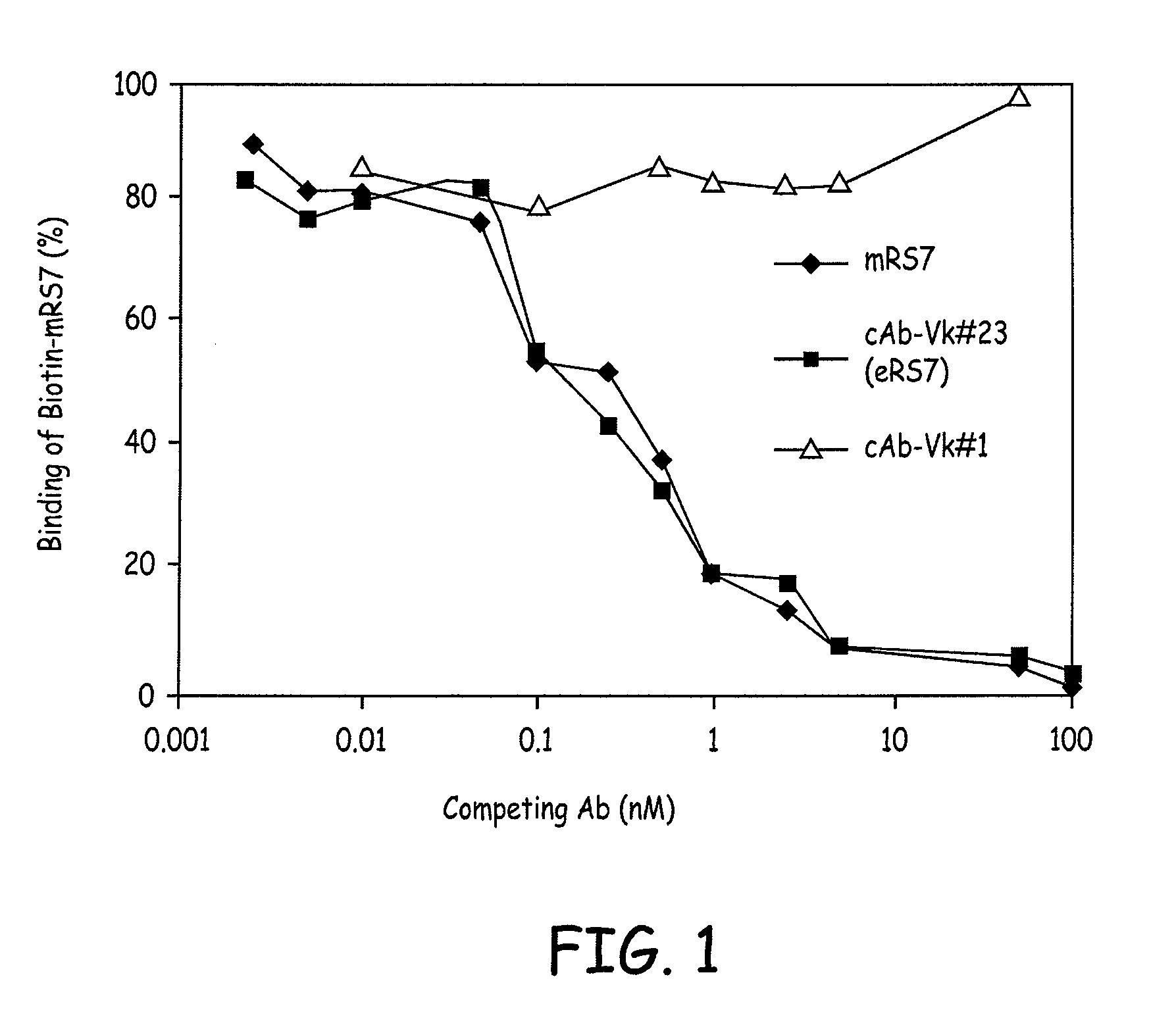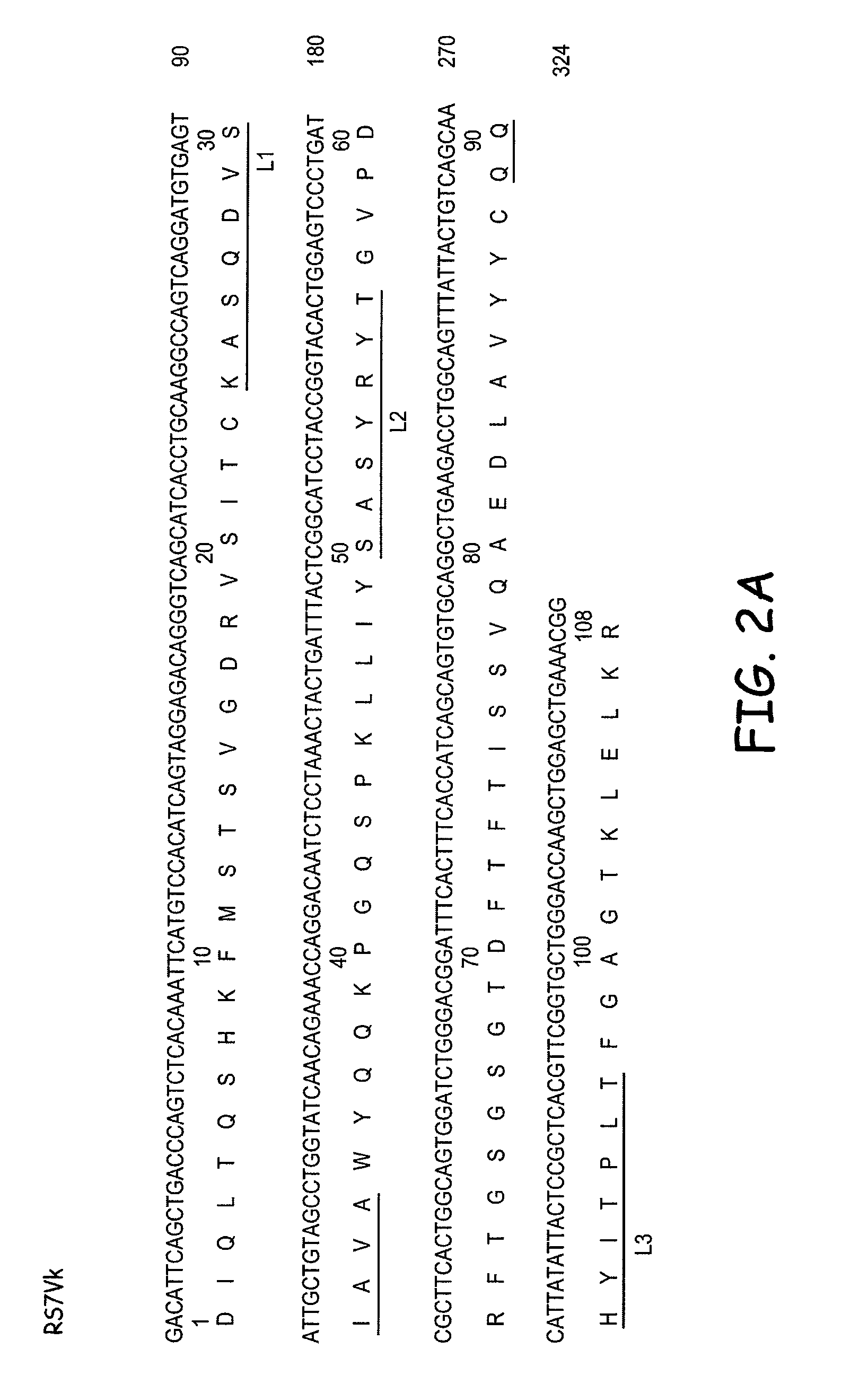Rs7 antibodies
a technology of monospecific binding and antibodies, applied in antibody medical ingredients, immunological disorders, drug compositions, etc., can solve the problems of dose-limiting toxicity, non-specific uptake by non-target organs such as the liver, kidneys or hone-marrow, etc., and achieve the effect of diagnosing and treating a malignancy
- Summary
- Abstract
- Description
- Claims
- Application Information
AI Technical Summary
Benefits of technology
Problems solved by technology
Method used
Image
Examples
example 1
Construction of a Chimeric RS7 Antibody
Molecular Cloning of RS7 Vκ and VH Genes
[0144] Total cytoplasmic RNA and m NA was prepared from RS7-producing hybridoma cells. The genes encoding Vκ and VH sequences were cloned by RT-PCR and 5′RACE and the sequences were determined by DNA sequencing. Multiple independent clones were sequenced to eliminate possible errors resulting from the PCR reaction. Sequence analyses revealed presence of two Vκ (#1 and #23) and one VH (RS7VH) transcripts. Combining each of the putative murine Vκ with the VH, two chimeric Abs (cAbs), containing human constant region domains were generated and expressed in Sp2 / 0 cells by transfection. cAb-producing clones were identified by screening the cell culture supernatants of the transfected cell clones by ELISA. Positive clones were expanded and cAbs were purified from the cell culture supernatants. The Ag-binding assay showed that only the cAb composed of Vκ#23 and VH, cAb-Vκ#23, bound to microwells coated with t...
example 2
Method of hRS7 Antibody Construction
Sequence Design of hRS7 V Genes
[0146] By searching the human Vκ and VH sequences in the Kabat database, the FRs of RS7 Vκ (SEQ ID NO: 2) and VH (SEQ ID NO: 4) were found to exhibit the highest degree of sequence homology to human SA-1A′cl Vκ (SEQ ID NO: 5) and RF-TS3 VH (SEQ ID NO: 8), respectively. One exception is the FR4 of RS7VH, which showed the highest sequence homology with that of NEWM VH (SEQ ID NO: 6. Therefore human SA-1A′CL framework sequences were used as the scaffold for grafting the CDRs of RS7Vκ (FIG. 3A, SEQ ID NO: 5; SEQ ID NO: 2; SEQ ID NO: 7), and a combination of RF-TS3 and NEWM framework sequences were used for RS7VH (FIG. 4, SEQ ID NO: 11; SEQ ID NO: 12). There are a number of amino acid changes in each chain outside of the CDR regions when compared to the starting human antibody frameworks. Several amino acid residues in murine FRs that flank the putative CDRs were maintained in the reshaped hRS7 Fv based on the guidelin...
example 3
Radioiodinations of Humanized RS7 Using Residualizing Labels
[0158] The residualizing moiety (IMP-R4, IMP-R5 or IMP-R8) was radioiodinated, and coupled to disulfide-reduced hRS7 along the procedure described elsewhere (Govindan S V, et al., Bioconjugate Chem. 1999; 10:231-240). See FIG. 9. In residualizing radioiodine labelings using 125I, to prepare 125I-IMP-Rx-hRS7 where x=4, 5 or 8), overall yields and specific activities (in parentheses) of 87.1% (3.38 mCi / mg), 34.3% (0.97 mCi / mg), and 76.6% (2.93 mCi / mg) were obtained using IMP-R4, IMP-R5 and IMP-R8, respectively. In large-scale 131I labelings using 131I-IMP-R4 entity, the following results were obtained. Using 20.4 mCi of 131I, 35.7 nmol of IMP-R4 and 3.22 mg of DTT-reduced hRS7, a 60% overall yield (3.80 mCi / mg) was obtained. A different run using 30.3 mCi of 131I, IMP-R4 and reduced hRS7 produced 69.7% yield (3.88 mCi / mg). A third run using 13.97 mCi of 131, gave 71.8% incorporation (4.42 mCi / mg). A 131I-IMP-R4 labeling usin...
PUM
| Property | Measurement | Unit |
|---|---|---|
| concentration | aaaaa | aaaaa |
| flow rate | aaaaa | aaaaa |
| concentration | aaaaa | aaaaa |
Abstract
Description
Claims
Application Information
 Login to View More
Login to View More - R&D
- Intellectual Property
- Life Sciences
- Materials
- Tech Scout
- Unparalleled Data Quality
- Higher Quality Content
- 60% Fewer Hallucinations
Browse by: Latest US Patents, China's latest patents, Technical Efficacy Thesaurus, Application Domain, Technology Topic, Popular Technical Reports.
© 2025 PatSnap. All rights reserved.Legal|Privacy policy|Modern Slavery Act Transparency Statement|Sitemap|About US| Contact US: help@patsnap.com



